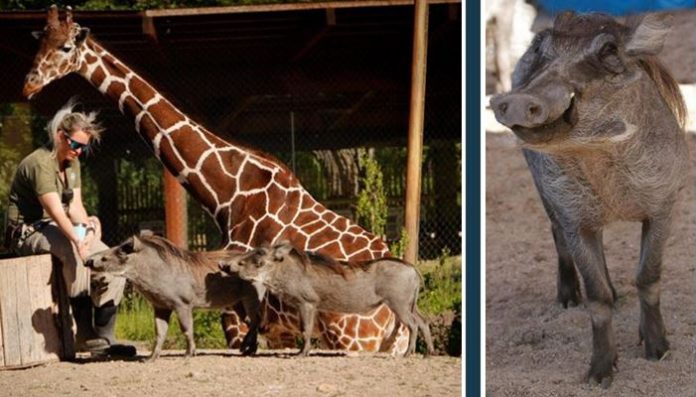SALT LAKE CITY, Utah, Oct. 2, 2019 (Gephardt Daily) — Utah’s Hogle Zoo has announced the death of 14-month old African warthog Walter just four months after his arrival at the facility.
Walter and brother Swifty arrived at the zoo in June, and were subjects of a high-profile zoo marketing campaign.
“The 14-month-old warthog was not eating well and having trouble urinating,” says a statement released Wednesday by the zoo.
“Veterinarians performed an exam and confirmed Walter had stones in his bladder and urethra (the tube that carries urine from the bladder out of the body). They were able to surgically remove the bladder stones but the stone in the urethra was unable to be removed.”
Additional attempts to remove the stone were unsuccessful.
“For several days, Walter was eating on his own and doing well with the stone still in place. However, on Monday he took a turn for the worse and stopped eating,” the zoo statement says.
“He was immobilized for blood-work, fluids and treatments (pain meds and antibiotics) but on Tuesday he had abdominal swelling diagnosed to be urine leaking from the area surrounding the stone. Due to the trauma to the urethra and the inability to repair the urethra to a functional state, humane euthanasia was performed.
“A necropsy (animal autopsy) result showed the stone was not in an attainable area and it took veterinarians over an hour to reach it. With the unusual nature of a pig’s urinary system — having an ‘S’ shaped curve — it was difficult to find the stone even in the post-mortem.”
Dr. Nancy Carpenter, Zoo Director of Animal Health, said it is not known why Walter developed the stones, but diet could be a factor.
“In pet pigs, urinary stones are a frequent finding. Although this has not been reported in this species, it has been reported in Visayan Warty pigs,” she said.
The diet of Walter’s brother, Swifty, will be adjusted in hopes of promoting urinary health.
Hogle Zoo’s African Savanna lead keeper, Melissa Farr, said it is tough when an animal becomes sick.
“You pour even more love, attention, medical care and prayers for them. We will miss him very much and will continue to give our very best care to his brother, Swifty.”
“Walter was very shy when he first came to the Zoo,” Farr said. “We earned his trust and he enjoyed spending time with us. He would come running across the Savanna when we called him. He loved bananas, cleaning up alfalfa scraps left from the giraffes, sparring with logs and basking in the sun with this brother Swifty who is getting lots of extra attention from keepers.”
Hogle Zoo is working to bring in another warthog soon to be a companion for Swifty, the statement said, adding that warthogs typically form “bachelor herds” in the wild.
Life expectancy for a warthog is roughly 15 years in the wild, but up to 20 years in human care, the statement says.








